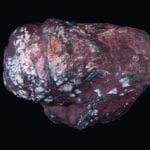 Weird Stuff
Weird Stuff  Weird Stuff
Weird Stuff  Our World
Our World 10 Ways Your Christmas Tree Is More Lit Than You Think
 Movies and TV
Movies and TV The 10 Coolest Stars to Set Sail on The Love Boat
 History
History 10 Things You Didn’t Know About the American National Anthem
 Technology
Technology Top 10 Everyday Tech Buzzwords That Hide a Darker Past
 Humans
Humans 10 Everyday Human Behaviors That Are Actually Survival Instincts
 Animals
Animals 10 Animals That Humiliated and Harmed Historical Leaders
 History
History 10 Most Influential Protests in Modern History
 Creepy
Creepy 10 More Representations of Death from Myth, Legend, and Folktale
 Technology
Technology 10 Scientific Breakthroughs of 2025 That’ll Change Everything
 Weird Stuff
Weird Stuff Ten Bizarre Facts About The Doge Meme
 Our World
Our World 10 Ways Your Christmas Tree Is More Lit Than You Think
 Movies and TV
Movies and TV The 10 Coolest Stars to Set Sail on The Love Boat
Who's Behind Listverse?

Jamie Frater
Head Editor
Jamie founded Listverse due to an insatiable desire to share fascinating, obscure, and bizarre facts. He has been a guest speaker on numerous national radio and television stations and is a five time published author.
More About Us History
History 10 Things You Didn’t Know About the American National Anthem
 Technology
Technology Top 10 Everyday Tech Buzzwords That Hide a Darker Past
 Humans
Humans 10 Everyday Human Behaviors That Are Actually Survival Instincts
 Animals
Animals 10 Animals That Humiliated and Harmed Historical Leaders
 History
History 10 Most Influential Protests in Modern History
 Creepy
Creepy 10 More Representations of Death from Myth, Legend, and Folktale
 Technology
Technology 10 Scientific Breakthroughs of 2025 That’ll Change Everything
10 Incredibly Curious Food Lawsuits
When it comes to lawsuits concerning the food industry, someone has to be in the wrong. Often, we’ll find that a company is trying to deceive its customers, but in some cases, the customers themselves can make some pretty outlandish claims.
While it’s true that most lawsuits are pretty straightforward, a select few of them stood out and made headlines across the world. Some were justified class-action lawsuits, while others just seem like feeble attempts at suing the food industry for something they weren’t responsible for. Here are ten utterly ridiculous, absurd, and astonishing lawsuits that involved the food industry.
10 The Amount Of Ginger In Canada Dry
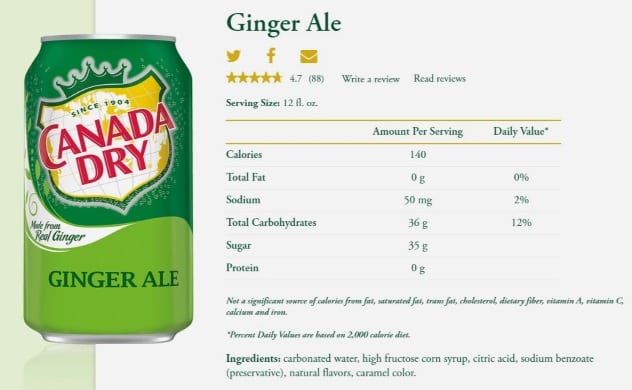
Ginger ale is often used to remedy common stomachaches and fevers because of the carbonation and, of course, the (naturally medicinal) ginger. Yet, in 2018, Julie Fletcher noticed a lack of the word “ginger” in Canada Dry’s list of ingredients and filed a federal lawsuit. The stated ingredients used to make Canada Dry are: carbonated water, high-fructose corn syrup, citric acid, sodium benzoate, natural flavors, and caramel color. According to her lawyer, Michael J. DeBenedictis, Fletcher believed that Canada Dry was using ginger root in their soda and thus believed that it would be a healthier alternative than regular sodas.
The company’s argument was that ginger is used in the process to make the “natural flavoring” that is listed in the ingredients. One factor that may have confused Fletcher further was a Canada Dry commercial that was aired back in 2011 which depicts a farmer and a crop of ginger. It certainly doesn’t help if the label says “Made from Real Ginger,” either.
A similar lawsuit against Dr Pepper (which makes Canada Dry) was filed in Missouri. Lab tests revealed that Canada Dry did not contain any ginger. The company argued that just because the lab tests couldn’t detect ginger doesn’t mean it wasn’t there. That suit was ultimately dismissed at the request of the plaintiff.[1]
9 Popeyes Sued By Customer After He Choked On Their Food
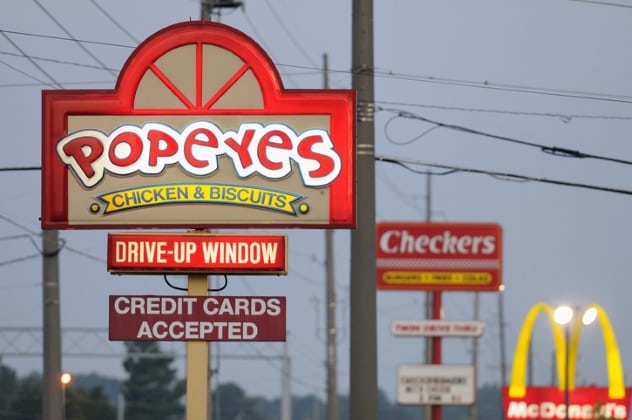
Usually, when someone chokes on their food, it’s because they ate it too fast or were negligent in making sure it was chewed thoroughly before swallowing. Apparently, this was not the case when a man from Mississippi filed a lawsuit against Popeyes. His complaint? He had to eat a large piece of fried chicken with his hands because of the fact that he didn’t get a knife with his drive-thru order, which ultimately made him choke on his food.
According to Paul Newton Jr., the man who sued Popeyes for this injustice, he only received a spork when the incident occurred late 2015. He ordered two chicken breasts with red beans and rice, a biscuit, and a soft drink. As with any order, the food came with napkins, packets of salt and pepper, and a spork. While driving back to his office, he started eating his food by using his spork to eat his beans and rice. Since he didn’t have a plastic knife with his food, he resorted to eating the chicken with his bare hands, which was (according to him) why he started to severely choke on his meal.
In addition to suing Popeyes for not including a plastic knife with his meal, Newtown also sought financial compensation for his pain and suffering and medical expenses since they had to perform emergency surgery to remove the piece of chicken from his throat. In the end, however, Newton dropped the suit.[2]
8 McDonald’s Sued For Millions Over Two Slices Of Cheese
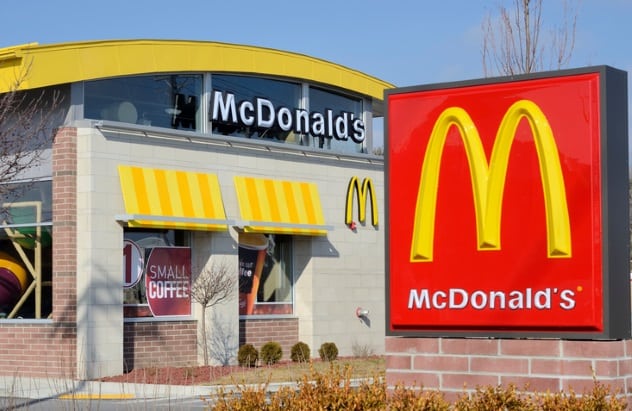
In 2018, two Florida residents filed a $5 million lawsuit against the fast food giant, claiming that they’ve been charging customers up to $1 extra for pieces of cheese on their hamburgers that they didn’t ask for or receive. Leonard Werner was the one who realized that McDonald’s was charging him extra for a Quarter Pounder with Cheese while still giving him a cheese-less hamburger, as he requested.
According to Werner, the McDonald’s app menu includes a cheese-less Quarter Pounder, but their actual restaurant menus don’t. This means that up to 25 million customers may have been overcharged, and if the judge sides with the plaintiffs in this case, they could all be eligible to receive $10 and a free sandwich. Yet, McDonald’s is confident that won’t happen. In their opinion, the case is “without legal merit.”[3]
7 Fruitless Froot Loops
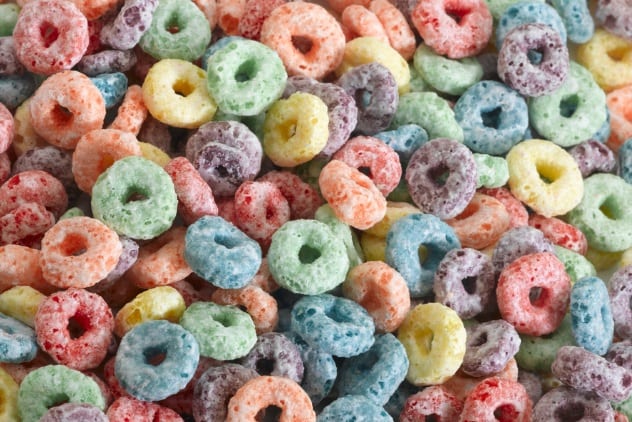
Back in 2009, a man by the name of Roy Werbel made headlines when he tried to sue Kellogg’s for their dastardly marketing that led him to believe there was actual, nutritious fruit in Froot Loops. The case got dismissed without prejudice because of the fact that Werbel had not successfully served Kellogg’s. It wasn’t long before he came back to start things up again and make sure that he served Kellogg’s correctly. Yet, Werbel still faced bigger problems with the lawsuit than just serving the defendant the right way . . .
Two federal judges made some valid points in the previous lawsuit. First of all, the word “Froot” cannot be interpreted as suggesting that there’s real fruit in the cereal. “Froot” isn’t real, and real fruit cannot come in the form of “loops.” There have been at least four cases made against Kellogg’s about Froot Loops (counting Werbel’s twice) over this same false assumption.[4]
6 Greek Yogurt That Isn’t Greek Enough
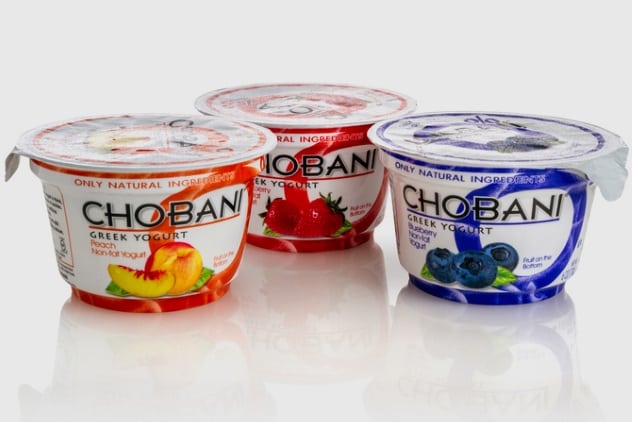
The makers of Chobani Greek Yogurt found themselves in hot water back in 2014 when two men sued them, claiming that there was absolutely nothing Greek about their products. According to them, Chobani’s Greek Yogurt is about as nutritious as a fudge ice cream bar. This is actually true, considering the fact that it shares the same amount of sugar (16 grams) as a Nestle Fudge ice cream bar. They also argued that none of Chobani’s products are even made in Greece and that they create further confusion among customers by placing a “0%” on their label without actually elaborating on what it represents.
The two men who filed the class-action lawsuit are Barry Stoltz from Scarsdale and Allan Chang from Queens. They sought an unspecified amount of compensation for damages after being tricked into believing that the “0%” on the label meant that there are zero calories/sugar. (The “0%” actually means that the product is nonfat.) Chobani did hit back at Stoltz and Chang, saying that the word “Greek” on their yogurt products simply refers to the way they make their yogurt, not where it’s from. They also pointed out that they’d managed to get a similar suit dismissed in California.[5]
5 The ‘Fast Food Made Me Fat!’ Lawsuit
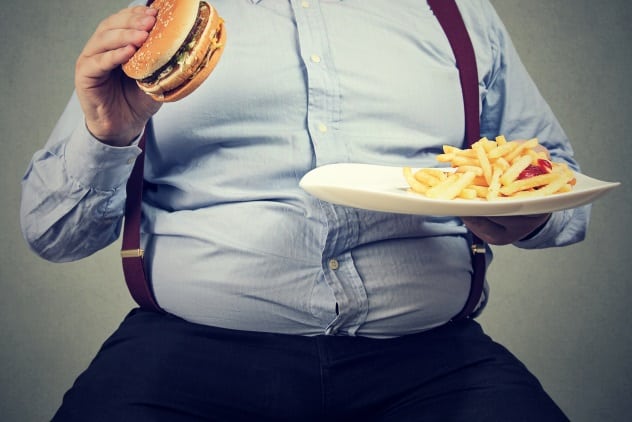
In 2002, a 56-year-old man from New York named Caesar Barber filed a class-action lawsuit against multiple fast food companies, including KFC, McDonald’s, Burger King, and Wendy’s, for jeopardizing his health with their unhealthy food. Barber’s lawsuit claims that the fast food restaurants, where he says he used to eat at four to five times a week (even after suffering a severe heart attack), did not properly disclose all the ingredients in their food to him. In an interview on ABC’s Good Morning America, he said that “they never explained to him what he was eating.”
According to Barber’s lawyer, Samuel Hirsch, the fast food industry has the responsibility to warn their customers of the dangers of consuming their food. It is Barber’s opinion that the fast food companies involved caused him to sustain serious injuries, including two heart attacks, and made him diabetic. A spokesperson for the food industry could hardly believe that Barber made his legal argument with a straight face. While some nutrition advocates and doctor’s groups insist that the food industry should take some responsibility for the obesity epidemic, Barber’s lawsuit was the first known legal action to claim that the fast food industry knowingly contributed to the obesity problem in the United States.[6] A judge threw Barber’s case out in 2003.
4 The ‘There’s Sugar In Jelly Beans?’ Lawsuit
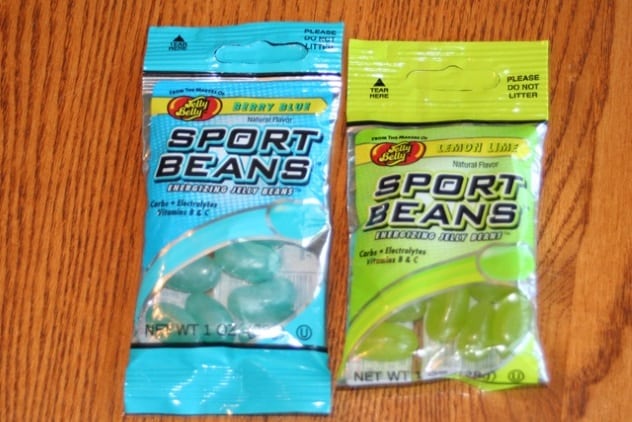
In 2017, a woman from California filed suit against the makers of Jelly Belly jelly beans for tricking her into believing that one of their products was free of sugar. Her name is Jessica Gomez, and her complaint is about Jelly Belly’s Sport Beans, which are marketed as an exercise supplement containing carbs, vitamins, and electrolytes.[7] The problem is that the ingredients list does not specify sugar as an ingredient but instead uses the phrase “evaporated cane juice.”
Gomez’s class-action lawsuit claims that the wording used on the label is in violation of the state’s Consumer Legal Remedies Act, Unfair Business Practices Law, and False Advertising Law and that it is designed to intentionally confuse customers who are health-conscious. Jelly Belly called the case “nonsense” in a notion to dismiss the lawsuit, saying that no reasonable customer would miss the amount of sugar content listed on their product’s “Nutrition Facts” panel. However, the Food and Drug Administration is on Gomez’s side; in 2016, they stated that the term “juice” shouldn’t be used unless it’s referring to that of a fruit or vegetable.
3 Krispy Kreme’s Falsely Advertised Ingredients
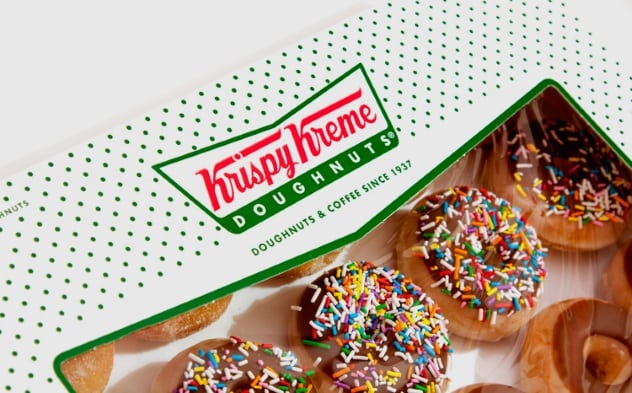
A man from Los Angeles filed a lawsuit against Krispy Kreme Doughnuts in 2016, claiming that they’d falsely advertised the ingredients of their fruit-filled and maple-glazed doughnuts. Jason Saidian sought $5 million in damages from the pastry chain for the nonexistence of the “premium ingredients” advertised in their products. According to Saidian, Krispy Kreme conducts “false and misleading business practices” because of the fact that their “Chocolate Iced Raspberry Filled,” “Glazed Raspberry Filled,” “Maple Bar,” and “Glazed Blueberry Cake” doughnuts don’t actually contain any real raspberries, maple, or blueberries.[8]
Saidian said that he felt cheated because the company had used real fruit in other items, like the “Glazed Lemon Filled” and “Glazed Strawberry Filled” doughnuts. He also said that if he had known that the other doughnuts did not contain any actual maple syrup, raspberries or blueberries, he wouldn’t have bothered to purchase them. The case was voluntarily dismissed in 2017.
2 The ‘Nutella Isn’t A Health Food?’ Lawsuit
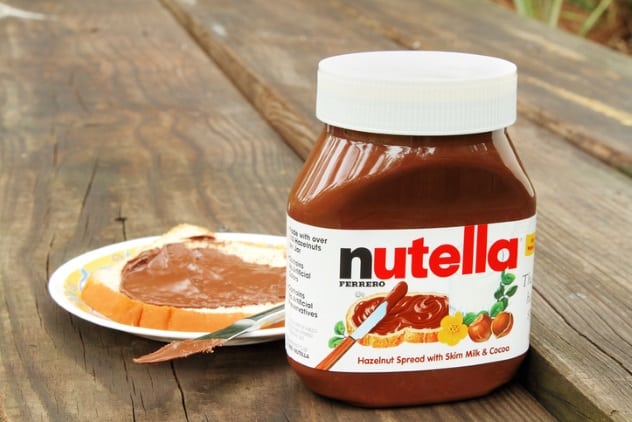
In 2012, the makers of Nutella, Ferrero USA, lost a class-action lawsuit against a parent who claimed that she was fooled into thinking that it was good for her kids. As part of the settlement, any US citizen who purchased a bottle of Nutella between January 1, 2008, and February 3, 2012, can file a claim. (California residents had different dates, specifically between August 1, 2009, and January 23, 2012.) Customers had until July 5, 2012, to file claims for up to five jars of Nutella, and they could expect to receive $4 back per jar, for a maximum compensation of $20 per household.
Athena Hohenberg, the Californian parent who proposed the class-action lawsuit, said that she fed her four-year-old daughter Nutella after she saw the advertisements which suggested that the spread was part of a healthy breakfast. She was shocked to find out that Nutella was, in fact, practically a candy bar. The lawsuit certainly underwent some degree of ridicule across the Internet, but the makers of Nutella agreed that their marketing campaign was misleading. Ever since then, Nutella has changed their labels and advertisements to better inform their customers of the chocolate spread’s contents.[9]
1 Subway’s Footlongs Come Up Short
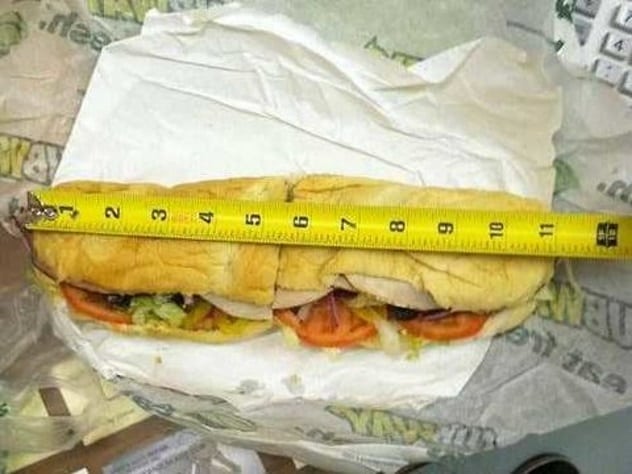
Back in 2013, a teen from Australia took a photo of his Subway footlong sandwich next to a tape measure, in which the sandwich only measured up to 28 centimeters (11 in) instead of the promised 30 centimeters (12 in) usually portrayed in the media. His post sparked public outrage and went viral, which led to a class-action lawsuit. In 2016, Subway settled and promised to make sure that their bread rolls would be at least 12 inches to ensure more uniformity in their bread. The suing attorneys were just about to make $520,000 in fees, when the director for the center for Class Action Fairness at the Competitive Enterprise Institute objected to the settlement. According to him, the class in the class-action lawsuit received “negligible to no relief.”
The judge involved with the case agreed that the settlement didn’t benefit anyone but the attorneys involved. Ultimately, the settlement got thrown out in 2017. This was because of a few key facts that made the case quite weak. In the first place, the majority of the bread that was being sold at Subway restaurants was at least 12 inches long, and anything that didn’t reach that length only missed it by a quarter of an inch. Also, all the raw dough sticks used to bake the bread sold at Subway restaurants weigh exactly the same. Due to the natural process involved with baking the bread, the final results could leave some loaves slightly shorter and wider than others. Lastly, the amount of meat and cheese included with each and every sandwich is standardized, which means that a sandwich that is slightly shorter than 12 inches still contains the same amount of meat and cheeses as it would have if it measured up to 12 inches.[10]
You can follow me on Twitter @JustThatChickXD.
Read about more weird, crazy lawsuits on 10 Of The World’s Most Ridiculous Lawsuits and Top 10 Bizarre or Frivolous Lawsuits.







